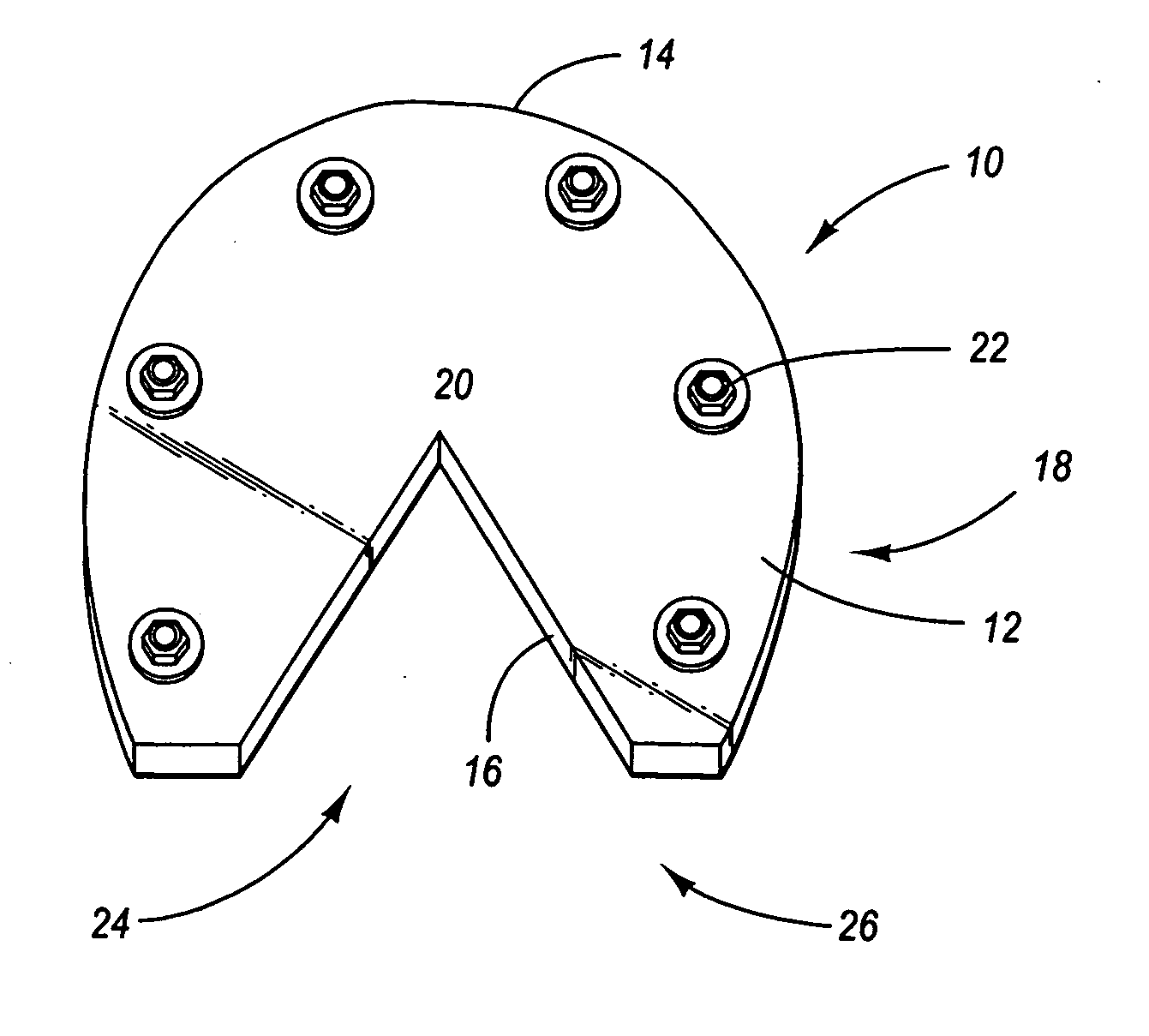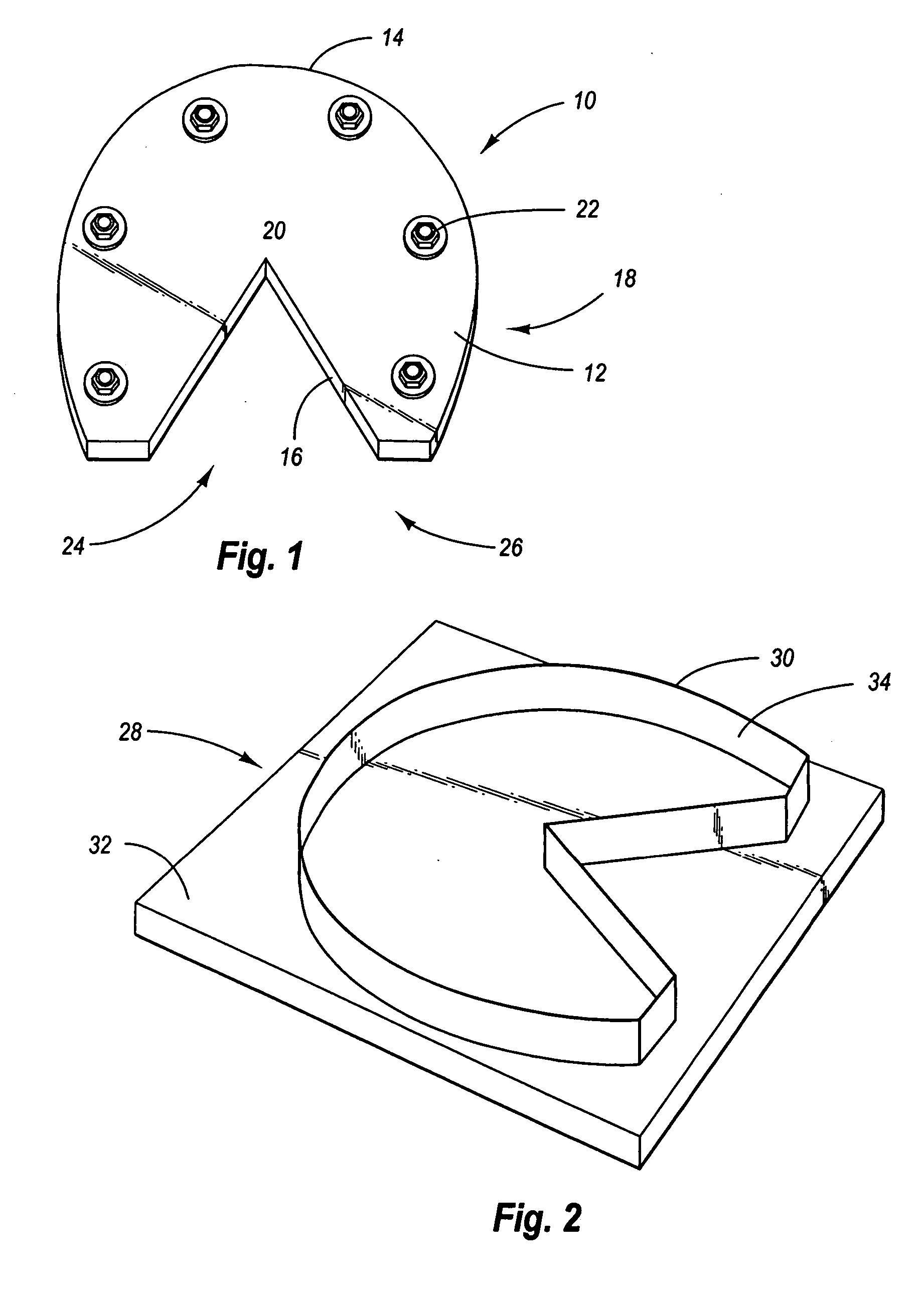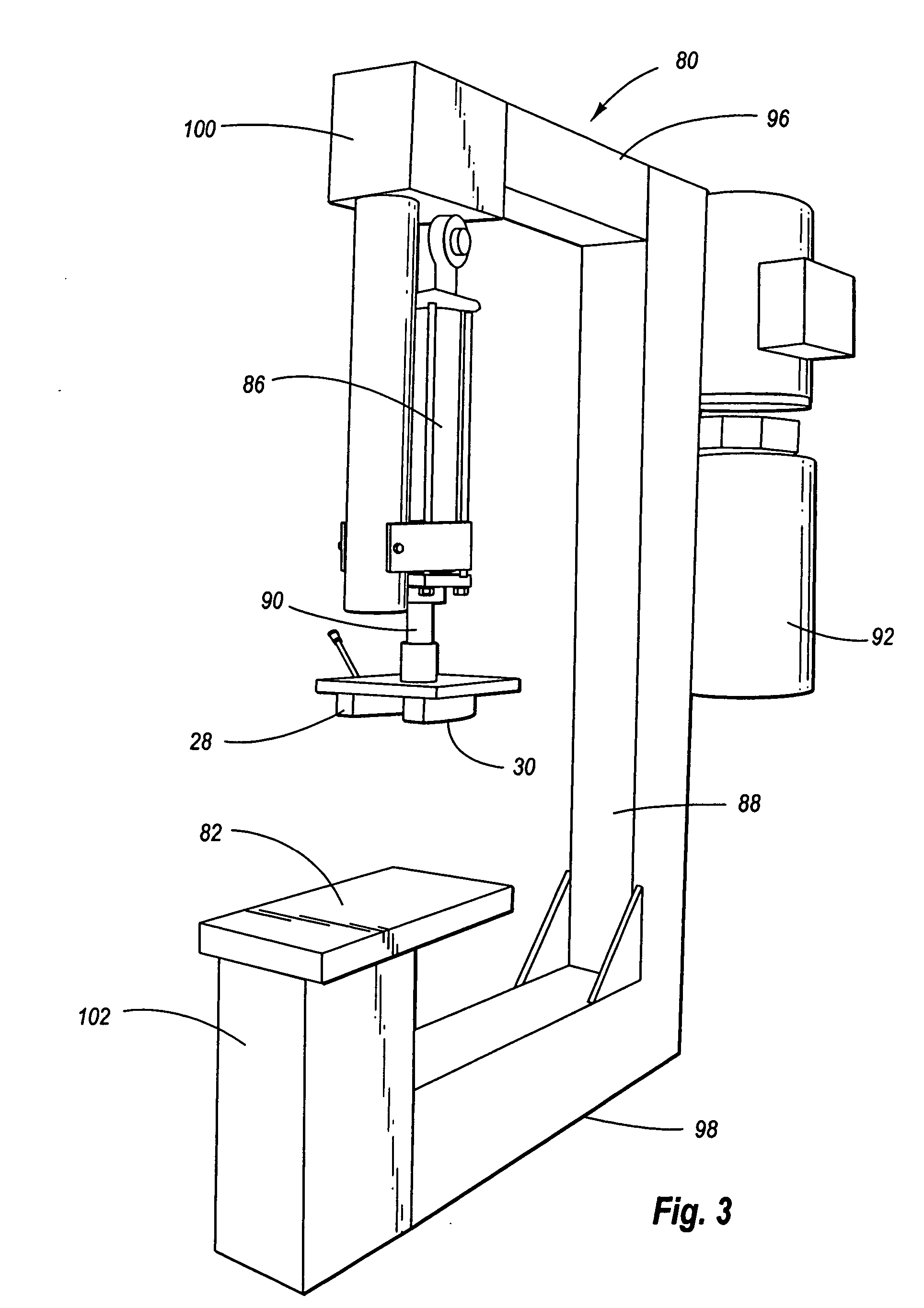Flexible horseshoes, method for attaching and device for making
a flexible, horseshoe technology, applied in the field of horseshoes, can solve the problems of inability to bend the bottom of the horseshoe is not particularly pounded on with a hammer, and the steel of the horseshoe can be very slippery on certain surfaces, so as to improve the grip, improve the grip, and improve the grip
- Summary
- Abstract
- Description
- Claims
- Application Information
AI Technical Summary
Benefits of technology
Problems solved by technology
Method used
Image
Examples
Embodiment Construction
[0034] While the invention is susceptible of various modifications and alternative constructions, certain illustrated embodiments thereof have been shown in the drawings and will be described below in detail. It should be understood, however, that there is no intention to limit the invention to the specific form disclosed, but, on the contrary, the invention is to cover all modifications, alternative constructions, and equivalents falling within the spirit and scope of the invention as defined in the claims.
[0035] Several preferred embodiments of the invention are shown in FIGS. 1-3. FIG. 1 shows the flexible horseshoe 10 of the invention. The flexible horseshoe 10 is also used in the claimed method for shoeing horses. The flexible horseshoe 10 includes a pad body 12 which has a first side 18 and a second side 20. The second side 20 is the side which when secured to a horse's hoof, faces away from the horse's hoof. The first side 18 is mounted adjacent to the sole of a horse's hoof...
PUM
 Login to View More
Login to View More Abstract
Description
Claims
Application Information
 Login to View More
Login to View More - R&D
- Intellectual Property
- Life Sciences
- Materials
- Tech Scout
- Unparalleled Data Quality
- Higher Quality Content
- 60% Fewer Hallucinations
Browse by: Latest US Patents, China's latest patents, Technical Efficacy Thesaurus, Application Domain, Technology Topic, Popular Technical Reports.
© 2025 PatSnap. All rights reserved.Legal|Privacy policy|Modern Slavery Act Transparency Statement|Sitemap|About US| Contact US: help@patsnap.com



